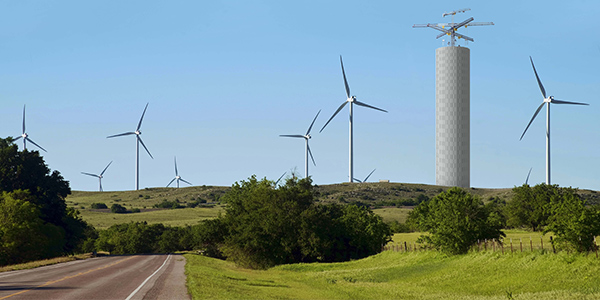Total U.S. energy storage deployments in 2020 could surpass all those in 2015-2019 combined, Dan Finn-Foley, head of energy storage for Wood Mackenzie, said Thursday.
One of the biggest drivers of recent growth in the energy storage industry is the role of utilities’ integrated resource plans in regulated markets.
Regulated utilities will present a “massive opportunity” for storage because of the way they are valuing the resource, Finn-Foley said during a webinar, “State of the U.S. Energy Storage Industry,” presented by the Energy Storage Technology Advancement Partnership.
Utilities are transitioning their IRPs to meet state clean energy policies, with renewables and storage starting to fill in for traditional baseload and peaking capacity resources, such as natural gas.
Finn-Foley said that, for example, Arizona Public Service increased the amount of energy storage capacity in its IRP by 960% from 2017 to 2020.
The storage industry will see exponential growth in the next five years, he said, with the final installed capacity for 2020 likely to pass 1 GW for the first time. Another spike will likely follow in 2021.
A Big Ask
The extended power outages in Texas last month present an important case for how much energy storage needs to grow if it is expected to help build resilient power grids. (See ERCOT, MISO, SPP Slough Load in Wintry Blast.)
Finn-Foley said, for example, that a grid that has lost 30 GW of resources for multiple days would need energy storage with a 90-hour duration and 30 GW of capacity to make up for the loss.
“That amount of energy storage is staggering,” he said. “It’s three or four orders of magnitude more than is on the grid today.”
Reaching that level of capacity in the U.S., he added, will require an equally staggering expansion in manufacturing capacity.
Huge advancements in long-duration energy storage will also be necessary.
“If storage wants to firm out these long-term outages or just smooth out spikes in demand and supply, then we’re going to have to start having the conversation of how we build out manufacturing and economic capability for long-duration systems,” Finn-Foley said.
Stable growth of energy storage in the U.S. will only be possible with the development of mature domestic manufacturing and regionalized supply chains, Imre Gyuk, director of energy storage research at the Department of Energy’s Office of Electricity, said during the webinar.
He also said that, as states reach their mandates for high penetration of renewables, long-duration storage will become essential.
“We have to go from six to eight hours, which we can handle with lithium-ion [batteries], to 10 hours, to diurnal, to several days and possibly weeks and even months,” Gyuk said. “In order to do that, we will need new technologies and new approaches, where we don’t just do energy storage per se, but we fold in other approaches, such as demand management.”


